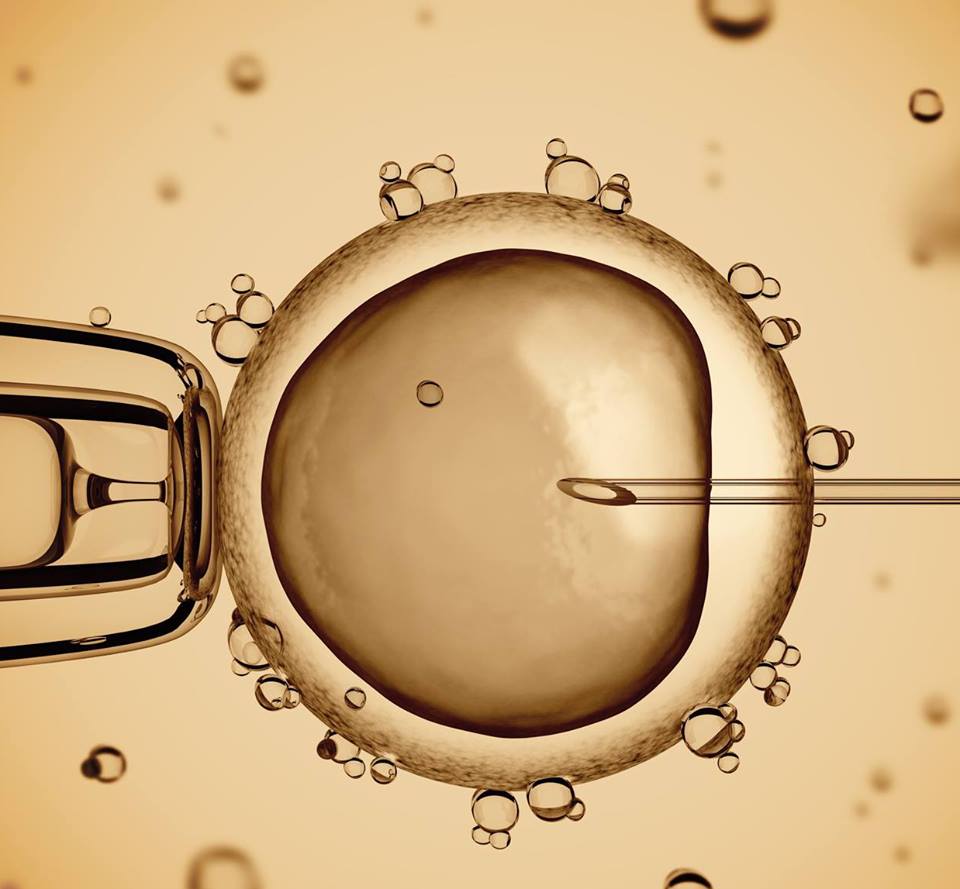In Vitro Fertilization (IVF)
Since 1978, with the birth of the first baby to be successfully conceived in vitro, the process of collecting sperm and eggs, combining them outside of the body, and placing the resulting embryo(s) into the uterus has opened the door to parenthood for thousands of infertile couples. In addition to standard in vitro fertilization treatment, options like intracytoplasmic sperm injection, preimplantation genetic screening and diagnosis, egg donation, and gestational surrogacy are made possible through this process. In vitro fertilization, also called IVF, is a cornerstone of many treatments that help patients at our south Florida clinics overcome infertility.

Indications
In vitro fertilization (IVF) was initially developed as a way to allow women with blocked fallopian tubes to become pregnant. Since its introduction, however, IVF has also been beneficial for couples suffering from male factor infertility, endometriosis, premature ovarian failure, and unexplained infertility. It is also an option for patients who have had a surgical sterilization procedure and would now like to have another child.
IVF Process
Ovulation Induction
The most common IVF treatment begins with the stimulation of the ovaries to prepare and release a number of mature oocytes, or eggs. This process starts about one week before menstruation with the administration of medications to prevent early ovulation. Once menstruation begins, fertility medications are given daily to stimulate the maturation of oocytes. When the eggs are fully mature, usually about eight to ten days later, an additional medication is given and the patient is prepared for egg retrieval. Visit our Ovulation Induction page to learn about this process in more detail.
Egg Retrieval
The mature eggs are collected for in vitro fertilization using a simple outpatient procedure known as ultrasound-guided transvaginal oocyte aspiration. This process takes between 10 and 15 minutes and recovery is brief. Visit our Egg Retrieval page for more information about this procedure.
Semen is collected on the same day as the egg retrieval procedure.
Insemination
Once the eggs and semen have been collected, they are sent to our south Florida fertility clinic lab, where a brief examination and preparation process takes place before they are combined. The eggs are then monitored at intervals while, hopefully, fertilization and embryo development take place. For more information about this phase of the IVF process, please visit our Fertilization and Embryo Development page.
Embryo Transfer
If in vitro fertilization of the eggs occurs, two to three healthy embryos will be selected for embryo transfer, or placement into the uterus. Any additional embryos can be cryopreserved, or frozen, for later use in case the first IVF cycle is unsuccessful. Hopefully, one or two of the transferred embryos will implant, resulting in a successful pregnancy.
Monitoring
During IVF cycles in which previously frozen embryos will be used, the ovulation induction and egg retrieval phases are not performed. For this reason, these cycles are significantly less expensive and involve fewer stages than the initial, traditional cycle. However, it is still necessary to closely monitor, or even control, the progression of the menstrual cycle. Because the frozen embryo transfer procedure must take place at precisely the time when conception would naturally occur, frequent ultrasounds and blood tests will be performed during the first 10 to 15 days of the cycle.
Frozen Embryo Transfer
When the cycle has reached the correct stage, two to four frozen embryos will be selected and thawed. The frozen embryo transfer procedure takes place in exactly the same way as a fresh embryo transfer. A thin catheter is inserted into the uterus through the cervix. The embryos are then introduced into the uterine cavity through this tube. The procedure takes very little time and there is minimal discomfort.
Chances of Success
Roughly 70 percent of embryos survive the freezing and thawing process. However, once thawing is complete and the healthy embryos are selected, the chance of successful implantation and pregnancy after frozen embryo transfer is about equal to that of a fresh transfer procedure.
Additionally, special techniques performed in combination with in vitro fertilization can overcome even more fertility obstacles. A woman who has a healthy uterus but no viable eggs can experience the unique journey of pregnancy and childbirth through the process of IVF with egg donation. Likewise, a woman who cannot carry a pregnancy to term despite having an adequate egg supply can hold on to her dreams of being a biological parent with the help of a gestational carrier. IVF with intracytoplasmic sperm injection (ICSI) can help to overcome all but the most severe forms of male factor infertility and preimplantation genetic diagnosis (PGD) offers couples who carry a genetic disease a way to ensure that their child will be healthy.
Contact Our South Florida Fertility Center
To learn more, and to request an appointment for an in vitro fertilization (IVF) consultation click here or call 954.247.6200. The infertility specialists at IVF Florida are happy to answer any questions you may have.
Call 954.247.6200 for more information
In vitro fertilization is a highly effective fertility treatment, but it is not uncommon for more than one cycle to be performed before pregnancy occurs. One of the ways we can ease the physical, financial, and emotional burden of undergoing multiple IVF cycles is through the use of cryopreserved, or frozen, embryos. Frozen embryo transfer can be used in subsequent IVF cycles when the initial cycle is unsuccessful, or be performed years later when the patient is ready to have another child.







